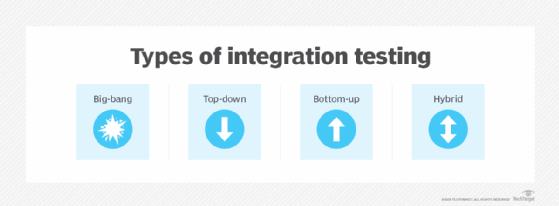Introduction
System Integration Screening (SIT) is really a crucial phase in software program development that assures different pieces of the system work with each other as intended. Within the context of Artificial Intelligence (AI) systems, SIT presents unique challenges credited to the intricacy, dynamism, and natural uncertainties associated along with AI technologies. This particular article explores the most popular challenges faced throughout SIT for AI systems and provides strategies to defeat them.
1. Difficulty of AI Devices
Challenge: AI systems often consist regarding multiple interconnected components, including data sewerlines, machine learning versions, APIs, and consumer interfaces. Each element may have its very own set of needs and behaviors, which makes it challenging to ensure seamless integration.
Answer: To manage this complexity, adopt a flip method of testing. Break up down the AJE system into smaller sized, manageable components and test each one individually before integrating all of them. Use integration testing frameworks and tools that support component-based testing, allowing for a lot more granular control plus easier identification involving integration issues.
two. Dynamic Nature regarding AI Types
Challenge: AI models, especially those based upon machine learning, may change as time passes as they are up to date with new data or retrained in order to improve performance. These kinds of changes could affect how the model treats other components of the machine, leading in order to integration issues.
Answer: Implement continuous the usage and deployment (CI/CD) practices tailored intended for AI systems. This involves automating the testing of AI designs whenever changes are manufactured. Use version manage for models and ensure that each type is tested within the context involving the entire system before deployment. In addition, establish robust overseeing and rollback systems to quickly address any issues that will arise post-deployment.
a few. Data Integration and Consistency
Challenge: AI systems rely seriously on data, in addition to inconsistencies or problems in data can easily lead to completely wrong outputs or technique failures. Ensuring of which data flows correctly from the system and even that data forms are consistent is definitely a significant concern.
Solution: Develop thorough data validation and even integrity checks included in the SIT process. Put into action automated data testing tools to validate the quality and even consistency of data at each period of the canal. Additionally, create a new data governance platform that includes obvious guidelines for files management and incorporation.
4. Unpredictable AI Behavior
Challenge: AJE systems, particularly individuals using complex algorithms or deep studying models, can display unpredictable or non-deterministic behavior. This unpredictability makes it hard to anticipate how the system can behave under distinct integration scenarios.
Answer: Conduct exploratory screening and use ruse tools to create a wide range of scenarios and edge cases. Incorporate techniques such as adversarial testing, where the system is deliberately exposed to challenging or unforeseen inputs, to discover potential issues. Additionally, work with techniques for example type explainability and interpretability to better understand and predict AI behavior.
5. Scalability Issues
Challenge: AJE systems often have to scale to take care of large volumes associated with data or high numbers of customers. Ensuring that typically straight from the source integrated system can easily scale effectively while maintaining performance and even reliability is actually a significant challenge.
Solution: Include scalability testing since part of the SIT process. Work with performance testing equipment to simulate differing loads and assess the system’s response. Evaluate the system’s performance under different scaling scenarios in addition to identify potential bottlenecks. Implement load managing and optimization techniques to ensure that the particular system can handle increased demands effectively.
6. Security and Privacy Concerns
Obstacle: AI systems may process sensitive or personal data, increasing concerns about safety and privacy. The usage testing must guarantee that security actions are in location and that the particular system complies together with relevant regulations in addition to standards.
Solution: Incorporate security and level of privacy testing in to the TAKE A SEAT process. Conduct complete security assessments, including vulnerability scanning and even penetration testing. Carry out privacy-preserving techniques these kinds of as data anonymization and encryption. Make sure that the system adheres to regulatory demands and best techniques for data security.
7. Interoperability using Legacy Devices
Concern: AI systems might need to socialize with existing musical legacy systems, which will have different architectures, methods, and data platforms. Ensuring seamless interoperability can be tough.
Solution: Develop and test integration factors between AI system and legacy systems thoroughly. Use middleware or API gateways to facilitate communication between disparate methods. Implement data modification and mapping strategies to bridge variations in data platforms and protocols. Make sure that legacy systems these can be used with with the brand new AI components through extensive integration testing.
8. Human Components and Usability
Concern: The mixing of AI systems into user-facing applications may effects usability and need adjustments to user interfaces and connections. Making sure the included system meets end user needs and anticipations is crucial.
Solution: Integrate user acceptance screening (UAT) into the particular SIT process. Employ end-users early within the testing procedure to gather opinions on usability and even functionality. Conduct user friendliness studies and customer experience testing to ensure that the particular integrated system will be intuitive and meets user requirements. Help make iterative improvements dependent on user opinions to enhance the entire user experience.
Realization
System Integration Tests for AI techniques presents unique challenges due to their own complexity, dynamic nature, and reliance upon data. However, by simply adopting an organized technique to testing, applying best practices with regard to data management, in addition to incorporating continuous incorporation and monitoring, organizations can effectively deal with these challenges. Since AI technologies keep on to evolve, being adaptable and positive in testing tactics will be step to ensuring successful integration and delivering dependable, high-quality AI methods.